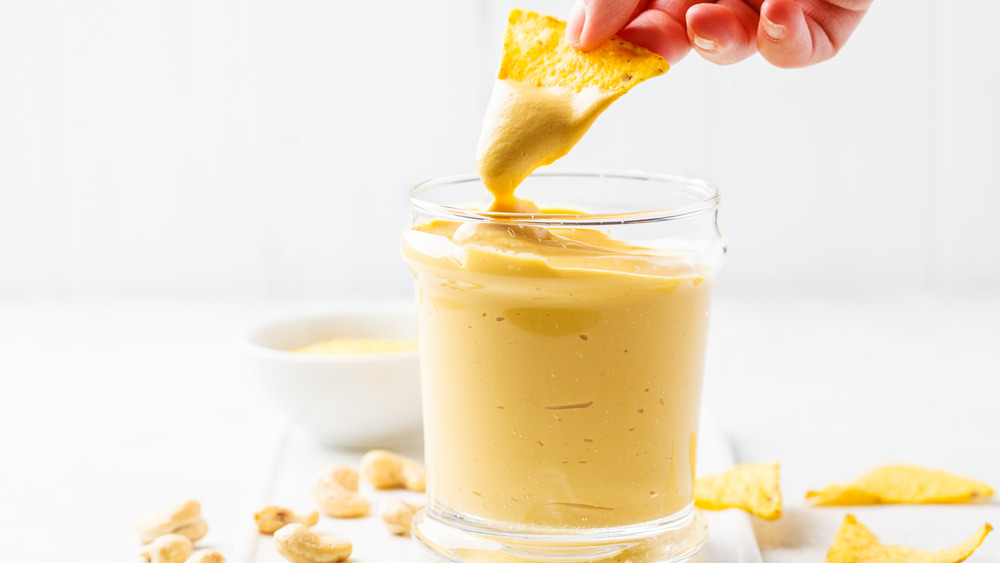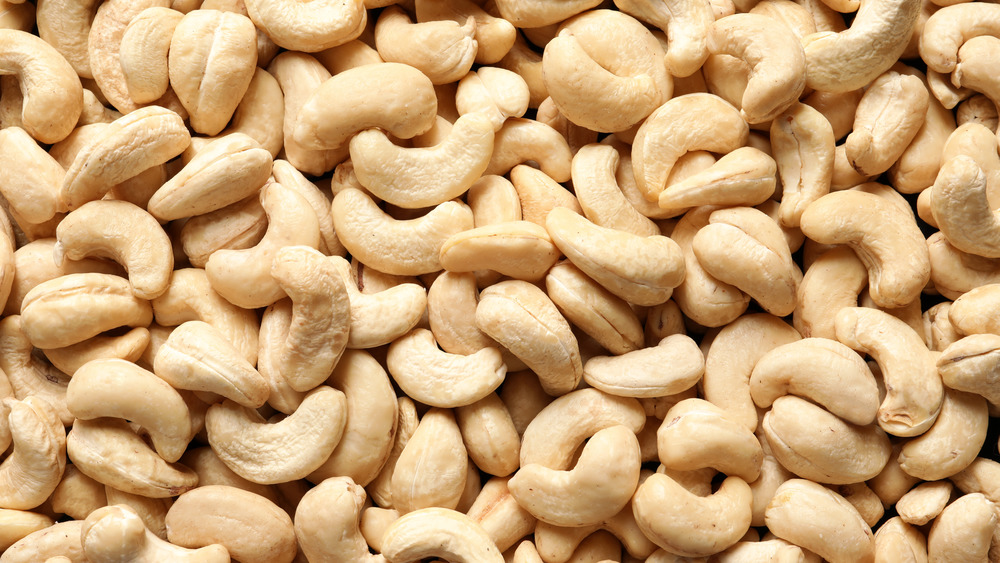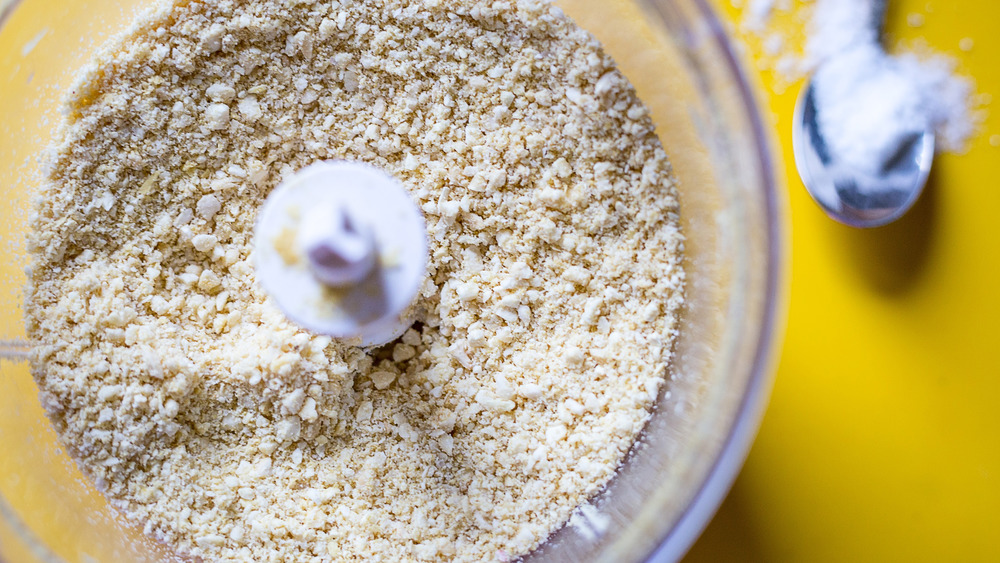What Is Cashew Cheese And How Do You Make It
There's no questioning that the popularity of and demand for non-dairy alternatives has been on the rise for a while now. In fact, between 2009 and 2015, the worldwide sales of non-dairy milk alternatives more than doubled, reaching $21 billion, according to a study published by the University of Virginia Health System. The same study speculates that the increase in demand for non-dairy alternatives might be due to allergies, lactose intolerance (which 65 percent of the US population has, by the way), or adherence to vegan or plant-based diets.
Dietary reasoning aside, non-dairy alternatives can still be just as tasty and nutritious as their dairy counterparts. Some of the most common non-dairy alternatives are made from nuts, seeds, legumes, vegetables, and cereals — and oftentimes taste surprisingly identical to the food they're supposed to mimic. But today we need to talk about cashews, and more specifically, how the heck people are able to make "cheese" out of them.
What is cashew cheese, anyway?
Cashew cheese? Sounds weird, we know, but bear with us. In short, cashew cheese is a nut-based alternative to traditional dairy cheese. According to Spread'Em Kitchen, "The cashews are blended and flavor components are added, along with nutritional yeast or active live cultures to give it a cheesy taste and texture." Similar to its dairy counterpart, cashew cheese can be seasoned to seamlessly match whatever flavor you're trying to achieve — whether you're looking for a hard, tangy, savory, soft, or ashy taste and texture.
Did we mention cashews are also super nutritious? According to Healthline, they contain zinc, iron, copper, magnesium, and good fats, so in addition to incorporating some "cheesy" goodness into your diet, you're also getting plenty of nutrients. (Pro tip: If you're making unsweetened cashew milk, it only contains 60 calories per cup, no saturated fat, and no cholesterol, according to University of Virginia Health System study.) If you ask us, that's definitely a win-win.
So, how do you make cashew cheese?
Cashews' creamy consistency and texture make them super quick and easy to work with, which might be one of the reasons so many people use it as a cheese alternative. All you'll need is a blender or food processor, some cashews, nutritional yeast (for a cheesy taste), and whatever flavor components you want, according to Spread'Em Kitchen. Cultured cashew cheese, on the other hand, takes longer to make.
"Active live bacteria are used to ferment the cashew cheese, adding taste and texture all on their own, just like in dairy cheese. Once the cheese base is inoculated with the vegan bacteria culture, it is aged for a period of time." One of the benefits of taking the extra time to make a cultured version? You'll get all of the healthy probiotics that come from the vegan bacteria culture — and it's delicious, so there's that.
To make quick, easy cashew cheese (not fermented), Minimalist Baker suggests soaking two cups of cashew nuts in cool water for 12 hours, draining and rinsing them, tossing them in a blender with some garlic gloves, lemon juice and zest, nutritional yeast, olive oil, water, and salt, then putting it in the fridge for six to 12 hours. (If you have a cheesecloth, that makes the job even easier.) Et voila! Delicious, savory non-dairy cheese that will make everyone ask for the recipe.


